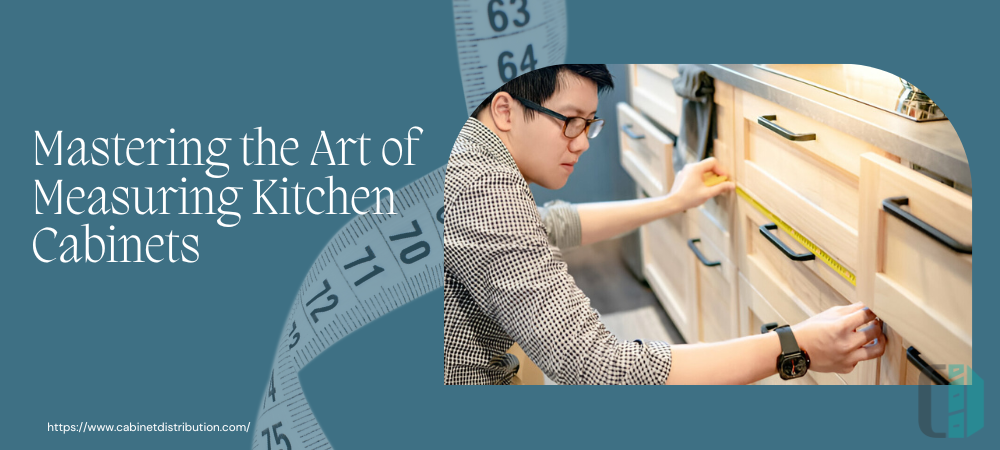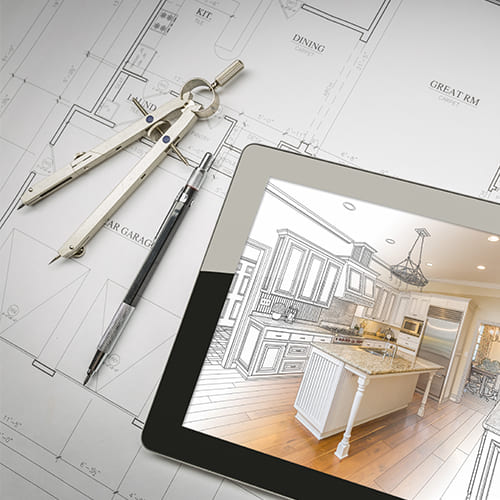A Complete Guide: Mastering the Art of Measuring Kitchen Cabinets
Introduction
The heart of any home is often the kitchen, where delicious meals are prepared, cherished memories are created, and families gather to share their lives. When it comes to kitchen remodeling, one of the most essential aspects is choosing suitable cabinets based on accurate kitchen measurements. Homeowners today have several options, but the best option is RTA cabinets.
These versatile cabinets are a popular choice for homeowners and DIY enthusiasts because they are cost-effective, high-quality, and come in just as many varieties as assembled cabinets, so you'll have no trouble finding the right ones for your home project.
However, before you start your kitchen renovation journey, getting your kitchen measurements right is crucial. This guide will provide the ultimate kitchen measuring guide, ensuring your project goes off without a hitch!
RTA Cabinets: A Space-Saving Marvel
RTA cabinets have gained immense popularity due to their space-saving, cost-efficient, and DIY-friendly nature. They come flat-packed and ready for assembly, offering you the flexibility to customize your kitchen's look. Plus, you can save on labor costs by putting these cabinets together yourself. They are ideal for any home renovation project, but you need to know what you're working with before buying a new set. We've compiled this kitchen measuring guide to help you accurately gather kitchen cabinet measurements.
How to Measure for Kitchen Cabinets
1. Gather Your Tools
Before you start gathering cabinet measurements, ensure you have the necessary tools on hand. You'll need a tape measure, pencil, paper, and a level. Having a partner to assist you can also be accommodating. It would help if you were sure to get precise kitchen measurements of the following things:
- Windows and Doors
- Light Switches and Fixtures
- Gas, Water, and Power Lines
- Air Vents
- Range Hoods or Hood Vents
- Power Outlets
2. Plan Your Layout
Consider your kitchen's layout and determine where you want to install your cabinets. Make a rough sketch of your kitchen, including walls, doors, windows, and any other significant elements. This sketch will help you visualize how the cabinets will fit into your space. It is crucial to have on hand when measuring kitchen cabinets and acts as a kitchen cabinet measurement template.
3. Measure the Walls
Start by noting the length of each wall where you plan to install the cabinets. Measure from the floor to the ceiling, and then record the measurements for each wall on your sketch. Be sure to measure at multiple points along the wall to account for any irregularities.
Tips for Measuring Walls:
- Start measuring from a corner of the wall and move clockwise while you take horizontal measurements.
- Leave out appliances and windows when measuring the walls.
- Label the walls so that you can go back and reference them.
4. Measure Doors and Windows
Note the location, size, and height of doors and windows. These elements will impact where you can place your cabinets and may require adjusting the cabinet layout. Measure these elements to ensure you can accommodate them when your final kitchen layout is drawn up.
5. Locate Obstacles
Identify any obstacles, such as electrical outlets, switches, pipes, and vents. Note their location and measurements, as you'll need to work around them when installing your RTA cabinets, and draw them into your plan.
Example: If there is an air conditioning vent in the area, label it on the design, add it to your kitchen measurements list, and place it in the space so you plan correctly for this obstacle.
6. Measure the Space Between Countertops and Upper Cabinets
If you're installing upper cabinets, measure the space between your countertops and the lower edge of the upper cabinets. This distance typically ranges from 18 to 20 inches. Also, measure the space between your upper cabinets and the ceiling if you plan to leave a gap between them. If not, measure how long it is from the bottom of your upper cabinets to the ceiling.
7. Calculate Cabinet Sizes
Once you have your kitchen measurements, it's time to select the appropriate cabinet sizes. Remember that RTA cabinets come in various standard sizes, so choose cabinets that best fit your kitchen layout.
8. Check for Level
Before you finalize your kitchen measurements and cabinet selection, use a level to ensure your floor and walls are level. Uneven surfaces can affect the installation of your RTA cabinets.
9. Plan for Fillers
Sometimes, you may need filler strips to ensure your cabinets fit perfectly. These filters can bridge gaps between cabinets and obstacles, such as walls, windows, or appliances.
Choosing cabinet sizes is one thing, but figuring out which RTA cabinets will look best in your space can be just as tricky. To avoid this, order samples from Cabinet Distribution to see what a cabinet will look like in your space. We also offer free kitchen design to help you visualize your chosen cabinets in your space.
Transform your kitchen with Cabinet Distribution's FREE Kitchen Design – Your dream kitchen awaits!
The Importance of Precise Measurements for RTA Cabinets
RTA cabinets are a cost-effective and efficient solution for many homeowners. But without the proper cabinet measurements, your project can quickly become a nightmare. Here's why precise measurements are essential:
- Fit and Functionality: Accurate kitchen cabinet measurements ensure your RTA cabinets fit perfectly into your space, maximizing functionality and storage.
- Aesthetic Appeal: Proper measurements lead to a clean, refined look, enhancing the overall aesthetic of your kitchen.
- Ease of Installation: With precise measurements, the assembly and installation of your RTA cabinets will be significantly smoother and faster.
However, to make the most of these cabinets, it would help to start with precise kitchen measurements. Knowing how to get these accurate measurements will help immensely when you start your remodel. It may seem like a lot initially, but it's easy once you start.
Wrapping Things Up
Measuring kitchen cabinets is a crucial step in revamping your kitchen. Without accurate measurements, you risk ending up with cabinets that don't fit properly or not enough cabinets to fit in your space, creating frustration and additional work during the installation process. By following our comprehensive kitchen measuring guide for RTA cabinets, you can avoid such headaches and ensure a seamless and successful project. So, when you begin your remodel, remember to take the time to measure your space.
RTA cabinets offer an excellent opportunity to revamp your kitchen space. However, proper kitchen measurements are essential to maximize this opportunity. With our kitchen measurement guide, you can ensure that your RTA cabinets fit like a glove and provide a beautiful, functional kitchen that you'll enjoy for years. Happy renovating!





